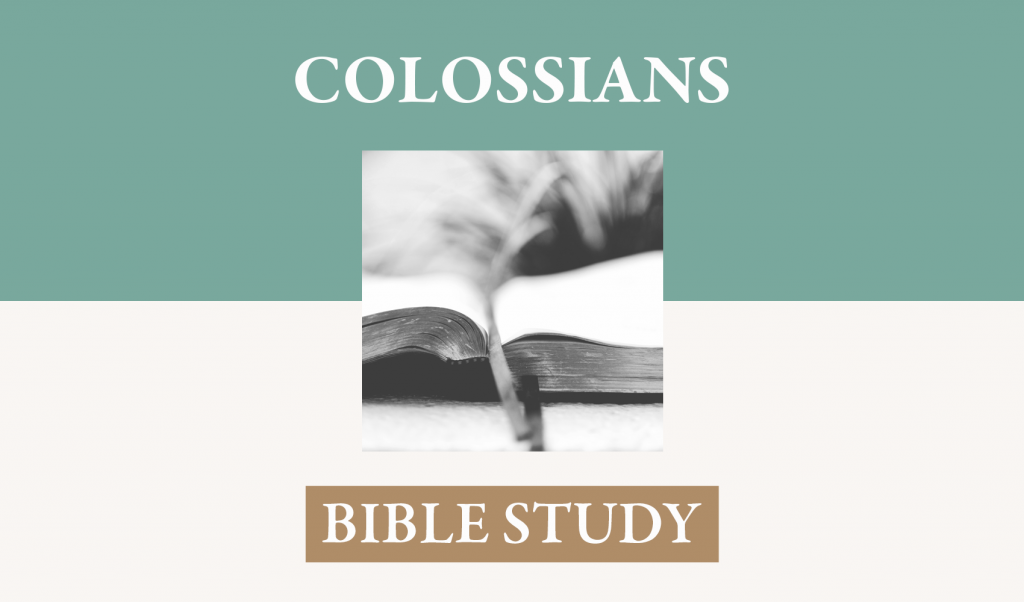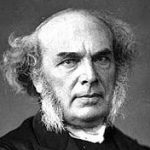Lesson Focus: This lesson explores key insights about Jesus Christ, God’s Son, as eternal Creator, Head of the church, and Savior and Lord.
Eternal Creator: Colossians 1:15-17.
[15] He is the image of the invisible God, the firstborn of all creation. [16] For by him all things were created, in heaven and on earth, visible and invisible, whether thrones or dominions or rulers or authorities–all things were created through him and for him. [17] And he is before all things, and in him all things hold together. [ESV]
[15] These two assertions set the direction for the entire discussion: He is the image of the invisible God, and the firstborn of all creation. In the Greek world, the word image conveyed one of two nuances of meaning. Both elements were always present, but one tended to dominate the other. The first is that of representation. If this image were primary, Paul would have said Jesus was the symbol of deity. Paul would have meant that Jesus exactly symbolized God. The second element of meaning was manifestation. When the term was employed, it meant that the symbol was more than a symbol. The symbol brought with it the actual presence of the object. By it Paul meant that Jesus brought God into the human sphere of understanding. He manifested God. The point is that in Christ the invisible God became visible. This points to a significant truth about the uniqueness of Christ. For Paul, Jesus bore the image of the earthly, Adam, and the image of the heavenly, God. He was the unique manifestation of both God and man, always embodying the best of both wherever He was. In choosing the word “image,” Paul stressed that God was present wherever Jesus was. He was the personal manifestation of deity. The second assertion about Jesus expresses His relationship to all of creation. This is found in the term firstborn which means to bring forth and first. It often expressed a special relationship with God the Father, one of privilege. The term soon lost the meaning of the first in time and developed the meaning of first in priority. The meaning of privilege predominates in the passage. The term firstborn distances Jesus from creation rather than subsumes Him under it. Therefore, the point is that Jesus is the firstborn (preeminent) with reference to the creation, just as later Paul argued that Jesus was preeminent (firstborn) from the dead [1:18]. Thus two assertions are made regarding Jesus. In His work toward us as revealer of God, He manifests God to us. In His work toward creation, He is preeminent over it.
[16-17] In verse 16 Paul provided the reason for asserting the supremacy of Christ over creation. The three phrases by him, through him and for him indicate the relationship. The first phrase should be understood as in His mind or in His sphere of influence and responsibility. Practically, it means that Jesus conceived of creation and its complexities. Creation was His idea. Theologically a clear distinction is to be made between the work of the Father and the Son. The Father, of course, has a significant relationship to creation. He is presented as the architect; He determined to bring creation into existence. The Son actually brought the plans into existence. Through His creative imagination and power, the created order exists. The Spirit, finally, does the actual work of applying the plans in a hands-on relationship to creation. This statement about Jesus, therefore, speaks to Jesus’ originating the details of creation and bringing them into existence by His own creative energy. The second informative phrase is that creation came into existence through him. This phrase means that creation came to be through His power and ability. He is the effective agent of creation (see John 1:1ff; Heb. 1:1-3). Finally, the passage affirms that creation exists for him. This means that Jesus is the goal of all creation. Everything exists to display His glory. When discussing Jesus’ work in creation, Paul expressed the dimensions of creation: in heaven and on earth. The thought of the two dimensions of creation gives way to the spirit beings who live there and who concern the Christian. These spirit beings occupy a significant place in the epistle. The special attention they receive suggests considerable preoccupation regarding them. Indeed, they are the object of much discussion here and in 2:8-3:4. Paul seems to have felt a need to note that these spirit beings are created by the power of Christ and conquered by the power of the cross [2:15]. The summary includes two statements of significance to the readers. The first is, He is before all things. It teaches that before creation Jesus existed which is a clear statement of His divinity. The second statement is in him all things hold together. The work of creation included the continual sustaining of what was created. As therefore every created thing owes its very existence to Christ, it follows that nothing in the entire universe lies outside the scope of His sovereignty. Christ, as Creator and Sustainer, controls all of creation in such a way that its ultimate goal or purpose (i.e. to bring glory to the Father) is assured.
Head of the Church: Colossians 1:18-20.
[18] And he is the head of the body, the church. He is the beginning, the firstborn from the dead, that in everything he might be preeminent. [19] For in him all the fullness of God was pleased to dwell, [20] and through him to reconcile to himself all things, whether on earth or in heaven, making peace by the blood of his cross. [ESV]
[18] Two statements made about Jesus set the direction for these verses. They relate to Jesus in his role of Redeemer. The first is He is the head of the body, the church. In this statement, both body and church serve to provide insight into their own meaning as they relate to each other as well as explaining Paul’s meaning of Christ as the head. This is an organic concept of the church. The organic picture illustrates the unity of the head and body. But it also refers to the primacy which belongs to Christ as the head or source of the church’s life. The second assertion is that He is the beginning, the firstborn from the dead. Here the reference is to His resurrection. The entire force of the passage points to the supremacy of Christ by virtue of His person. Jesus became the Lord of redemption and the firstfruits of those who belong in that redeemed company. God determined that a new order would be built around the person of Jesus, and that is the focus of this second portion of the passage. This new order of existence is a resurrection existence. The purpose of the resurrection is stated here as that in everything he might be preeminent. In light of this context, the word everything must be understood as the creation, over which Jesus reigns as king, and the order of redemption, over which He reigns as head. Both dimensions owe their existence to Him, the preeminent or supreme one. Thus the emphasis here is not on the mutual dependence of the various members of the body on one another so much as on the total dependence of the local church on Christ for the continuance of its life.
[19-20] Paul’s first claim about Jesus was that God’s fullness dwelt in Him. The statement means that God was pleased to take human form in Jesus. He was no less than God, and He continues to be fully divine. Paul attributed everything to the Father. There is perfect harmony in the plan of salvation, for God the Father initiated the deliverance of His people [1:12-14], and God the Father delighted in the fact that Jesus was fully and completely God [1:19]. There is no depreciation of the person and work of Jesus, but there is a heightened appreciation for the involvement of God the Father. Verse 20 takes up the work of Jesus. Like the previous statement, this has God as the subject. God delighted in Jesus’ central role of redemption. The essence of verse 20 may be summarized by four statements. (1) Reconciliation is a work of God. The Bible is not the story of man’s search for God. From the first sentence Holy Scripture is marked out from other religious writings by its unique insistence that the initiative belongs wholly to God. Verse 19 precedes verse 20 precisely to make clear that God must even take human flesh to provide the Man who will be able to represent all men. So it is only through Christ that reconciliation can be attempted and accomplished. (2) Reconciliation is a work that has been accomplished. Reconciliation with God waits not upon human achievement but upon human acceptance. The One who requires to be reconciled is the One who carries out the work of reconciliation. The importance of this will be realized when we see that if no objective work of reconciliation was done by Christ’s death, the message of the cross ceases to be a gospel (that is, good news) and becomes simply an appeal. (3) Reconciliation was achieved at the cross. Paul never locates power in persons or ceremonies. He would turn our eyes back to the cross for the place of power, and up to the throne for the true Man of power. (4) Reconciliation through Christ takes in all things. The scope of this reconciliation is universal; it takes in the whole created order. Christ is the sufficient Savior: nothing and nobody lies outside the scope of his reconciling work. Therefore there is no other way or means by which any one or thing can be reconciled to God. This peace achieved through the death of Jesus is an objective peace. It is the peace of relationships, not feelings. This peace brings order and harmony into what is otherwise chaotic and distorted.
Savior and Lord: Colossians 1:21-23.
[21] And you, who once were alienated and hostile in mind, doing evil deeds, [22] he has now reconciled in his body of flesh by his death, in order to present you holy and blameless and above reproach before him, [23] if indeed you continue in the faith, stable and steadfast, not shifting from the hope of the gospel that you heard, which has been proclaimed in all creation under heaven, and of which I, Paul, became a minister. [ESV]
The content here resembles Ephesians 2:1-11, where many of the same terms, phrases, and ideas are employed. Paul reminded the Colossians of the blessings of reconciliation by recalling their condition before salvation. They were once continuously and persistently out of harmony with God. Paul identified both the source and effect of their disposition toward God. Three key terms present a package revealing their former situation. Alienated and hostile describe the contrast between God and those who do not do His will. Mind speaks of a person’s disposition. Actions naturally arise from the disposition, which is a matter of the mind/heart. Evil deeds reveal the heart of the matter, which is the mind/disposition. Evil deeds are the inevitable result of an evil mind/heart. Their present condition is one of reconciliation. In verses 22-23, Paul discussed the means and purpose of their reconciliation. Paul used sacrificial terminology to describe the way reconciliation occurred. Reconciliation involved a physical sacrifice. Moral and spiritual changes come because of the death of Christ. By his death emphasizes the reality and totality of the sacrifice.
Paul always kept the purpose of reconciliation in mind: to present you holy and blameless and above reproach before him. God is best glorified among those who have cooperated with His working and whose lives reveal true Christian character. Three statements describe the character expected of the believer: holy, blameless, and above reproach. The first two statements recall the language of animal sacrifice. The last term is a judicial term. It pictures a judge declaring a person innocent. The conditional clause in verse 23 (if indeed …) suggests an interval between the time of their reconciliation and their presentation to God. Paul addressed the responsibility of the Colossians in the interval between reconciliation and Christ’s return. There was no doubt that the genuine believers would continue. The fact that they did continue evidenced the reality of their commitments. This continuance is then defined as faithfulness to the gospel. The gospel is then defined as: (1) the gospel they had already heard; (2) the gospel the world was also hearing; (3) the gospel Paul had received and served. The duty of the Colossians to this gospel is to be stable and steadfast and not to shift (they are not to be dissuaded from the hope of the gospel). To continue in the faith is to be content with the gospel that first saved and delivered them from spiritual death and estrangement with God, and brought them straightaway to live in His presence, at peace with Him.
Questions for Discussion:
1. What does Paul mean by calling Christ the image of the invisible God? What are the implications for the way you live your life that all things were created by him, through him and for him and that in him all things hold together? What does Paul mean by all things? (Emphasize here that, if all things were created to show Christ’s preeminence, then we should use all things in such a manner that they will bring glory and honor to Him. Have your class discuss the implications of that statement.)
2. What does Paul mean by reconcile? What was necessary in order for Christ to be the reconciler?
3. In 1:21-23, Paul shows how the new lives of the Colossians differ radically from their old ones. What changes have occurred: in their relationships with God and in their behavior? How were these changes made possible [1:19-20,22]? How does an individual know if he or she is continuing in the faith [1:23; 1 John 2:3-6; 3:18-20, 23-24].
References:
Colossians, John Davenant, Banner of Truth.
The Message of Colossians & Philemon, R.C. Lucas, Inter-varsity Press.
Philippians, Colossians, Philemon, Richard Melick, Jr., NAC, Broadman Press.

















